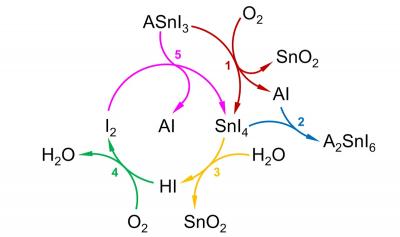Researchers present a new theory for light-induced halide segregation in mixed halide perovskites
Researchers at the Eindhoven University of Technology have developed a theory that may explain the origins of perovskite solar cells' thermal stability.
The research group's analysis was focused on five types of halide compounds combining both bromide and iodide. 'This combination works particularly well because it allows for the 'tuning' of the bandgap, or the minimum amount of photon energy needed to generate electricity in the material,' they said, adding that this solution is ideal when perovskite PV devices are used in tandem solar cells.


